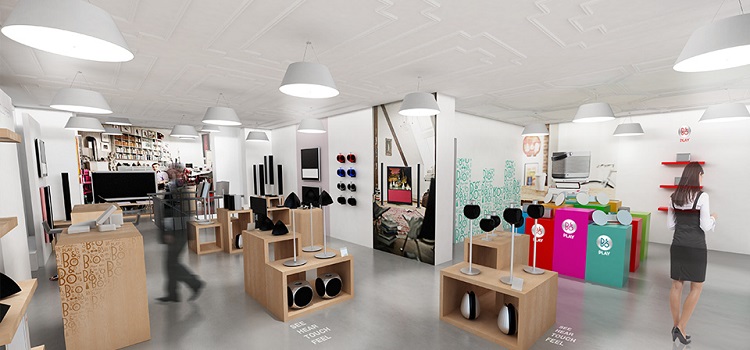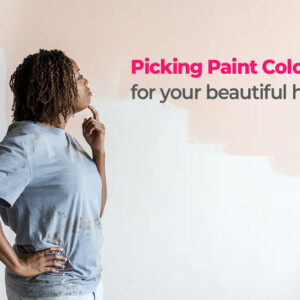Many people think of interior design as a luxury only affordable for the wealthy. They picture expensive, artsy consultants coming into their homes to pick out furniture and pieces of modern art that are even more expensive than the hourly rate the designers will be charging. While interior design can become as expensive as you want it to be, there’s no reason that even the most modest of households can’t have some element of design incorporated into their homes. A great interior designer develops skills and an eye for design over many years, but the truth is that anything is better than nothing. Even with a good attempt by an amateur with a low budget, a room can look much better than it would otherwise.
To do this however, one has to understand the basics of interior design. There’s a lot to consider, and while it might get overwhelming for people as soon as they start delving into the massive number of choices they have for furniture, fabrics, paint colors, and decor pieces, there are some fundamental concepts that must be followed for a good interior design.
The Space or Room
One of the first things to take into account is the space that’s being utilized. The layout of a room will dictate a lot as far as what can go in it and how the pieces within the room work together to make it evoke a certain feeling. Which also brings us to our other most important consideration – good design is supposedly universal in nature, but tastes are different from person to person as well. What might be construed as good design for most people might be a catastrophe for some others. It depends on taste, likes, and dislikes. After gaining a good understanding of what type of space you’re working with, it’s helpful to develop a basic familiarity with your own tastes. Looking online at pictures of similar size spaces and layouts can give some good ideas and can provide a basis for your taste.
Size of Furniture
Beyond just taste though, some methods will naturally work better than others. For example, if the space that’s being designed is small, it’s generally good practice to use smaller pieces of furniture, as large pieces throw the room off balance quickly by taking up too much room and appearing awkward. Likewise, if it’s a large room that needs to be designed, it’s best to fill the room with larger pieces of furniture so that it will appear full. Can you imagine a grand living room with just a loveseat, a tiny coffee table, and a thin chaise lounge? It would appear unfinished and unfilled almost, even to the untrained eye.
Texture
Other things to consider include textures, contrast, and colors. Textures give a room a distinct feeling. They’re the pattern on the pillows, the wallpaper, or the broad brushstrokes on the piece of art sitting above the mantel. Texture should be varied throughout an interior design, as too much of a hard or rough texture will give a room a harsh feeling, and too many soft textures will make it dull and uninspiring. This is actually a good example of contrast too, another consideration that must be thought through for every interior design.
Contrast
Contrast can be turned up or down depending on tastes, but it’s important to have some contrast in order to draw the attention to certain elements of the room in an aesthetically pleasing way. This is usually achieved through the use of different colors, textures, and the juxtaposition of pieces of furniture, decoration, or artwork. Good contrast can require a bit of effort though; while black and white are naturally good oppositional colors to create contrast, other color combinations or texture combinations might clash instead of providing the desired effect. Before making final purchases, it’s best to try to get as close as possible to a true visual of what different pieces, colors, or textures will look like once they’re all together in a room, especially for amateur interior designers who don’t yet have an eye for how a room will look before it’s all assembled.
Color
Color is another important factor, and it might actually have the most visual effect on a room of any interior design consideration. Picking color schemes that work well together can take some time and effort, and it’s usually good practice to think through how some splashes of color can contrast with the main color of a room. Different colors give off different emotional feelings too, and it’s important to be aware of these effects before painting an entire room. For example, red can be warm and passionate, blue can be cool and level-headed, white can give a feeling of being clean or even sterile, and an overwhelming amount of black can actually feel dark and depressing. Thinking through colors is important and shouldn’t be taken lightly, especially as color tends to provide some of the most striking visual effects within a room.
Conclusion
Interior design can take time to get good at, but by gaining a better understanding of your own tastes as well as what might work for your home or apartment, it’s possible to have an interior design that you can be thrilled with. It’s best to go through some trial and error with different colors and patterns if possible, and for those who are digitally savvy, taking pictures of a space in order to alter it digitally can prove a useful tool for getting visual ideas and developing a sense of what might work and what won’t. There will naturally be some trial and error, but with persistence, good design and an inviting, comfortable space is sure to follow.
Jessica Kane is a professional writer who has an interest in interior design and home decor. She currently writes for Designer Drapery Hardware, a leading vendor of all types of drapery hardware such as rods, finials, and brackets.





